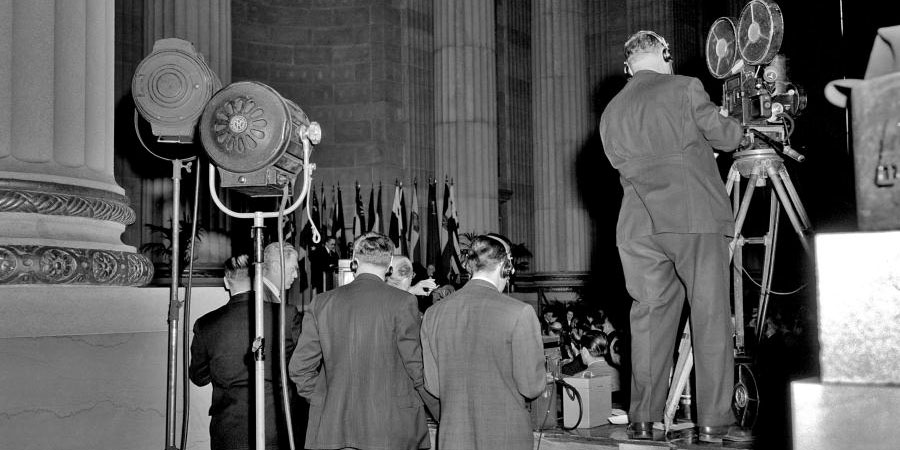Call for Papers: Diplomatic Interiors: Spaces, Practices, and Infrastructures in Historical Perspective
International conference, November 19-21, 2025, hosted at the gta Institute (ETH Zurich) and CDHM (Geneva Graduate Institute). Organised by Andreas Kalpakci, Charlotte Rottiers, and Davide Rodogno.

Diplomatic interiors have long shaped how foreign relations are conducted. From ambassadorial residencies to the conference halls of multilateral institutions, their design, use, and upkeep are closely intertwined with the negotiation, representation, and protocol that make diplomacy work. The material culture of diplomacy underwent profound changes over the course of the nineteenth and twentieth centuries. During this period, countries began building embassies, legations, and consulates abroad not merely to house diplomatic staff, but to assert political presence and signal bilateral relations. Meanwhile, multilateralism evolved from ad hoc conference diplomacy into a permanent institutional system, culminating in the League of Nations after World War I and expanding throughout the twentieth century. These shifts transformed the format, scale, participants, and technologies of diplomatic space. Although recent scholarship has examined how architecture mediates statehood, identity, and geopolitics, the interior settings of diplomacy, where its practices are staged and sustained remain underexplored as material and social environments.
This conference frames diplomatic interiors as environments for bilateral representation, intergovernmental collaboration, and negotiation. We invite scholars to investigate the technological, social, and material infrastructures that supported the working of these interiors, both symbolically and operationally. How did layout, furnishings, decoration, and technological systems contribute to the projection of power, the performance of protocol, or the pursuit of cooperation and cultural exchange? We welcome contributions that move beyond the design or inauguration of diplomatic buildings to consider interiors as a lens for exploring the evolving needs of diplomacy, including maintenance, technological adaptation, financing, the user perspective and hidden forms of labour. Contributions may cover the interplay between architectural features and diplomatic operations in embassies, ceremonial halls, headquarters, or temporary installations; the relationship between interior spaces and their urban surroundings, especially in colonial or developmental contexts; intersections between bilateral and multilateral sites and functions; or the historical transformation of specific spaces across the nineteenth and twentieth centuries, and, if relevant, also the twenty-first centuries, in relation to changes in infrastructural systems. Papers that adopt comparative, transnational, and global perspectives are especially welcome.
The conference seeks to foster interdisciplinary dialogue by providing a platform to exchange methods, sources, and insights across diplomatic history, art and architectural history, international relations, material culture studies, sociology, anthropology, and related fields.
Please submit an abstract of no more than 300 words, along with a short bio of up to 100 words, to by July 31, 2025. Submissions will be reviewed by the scientific committee, and selected participants will be notified in early September. We aim to cover attendance costs, although the final format of the event (in-person or hybrid) will depend on available funding. The conference will take place on November 19 (half day) and 20 (full day) at ETH Zurich and on November 21 (full day) at the Geneva Graduate Institute, including a study visit to the Palace of Nations, currently undergoing renovation.